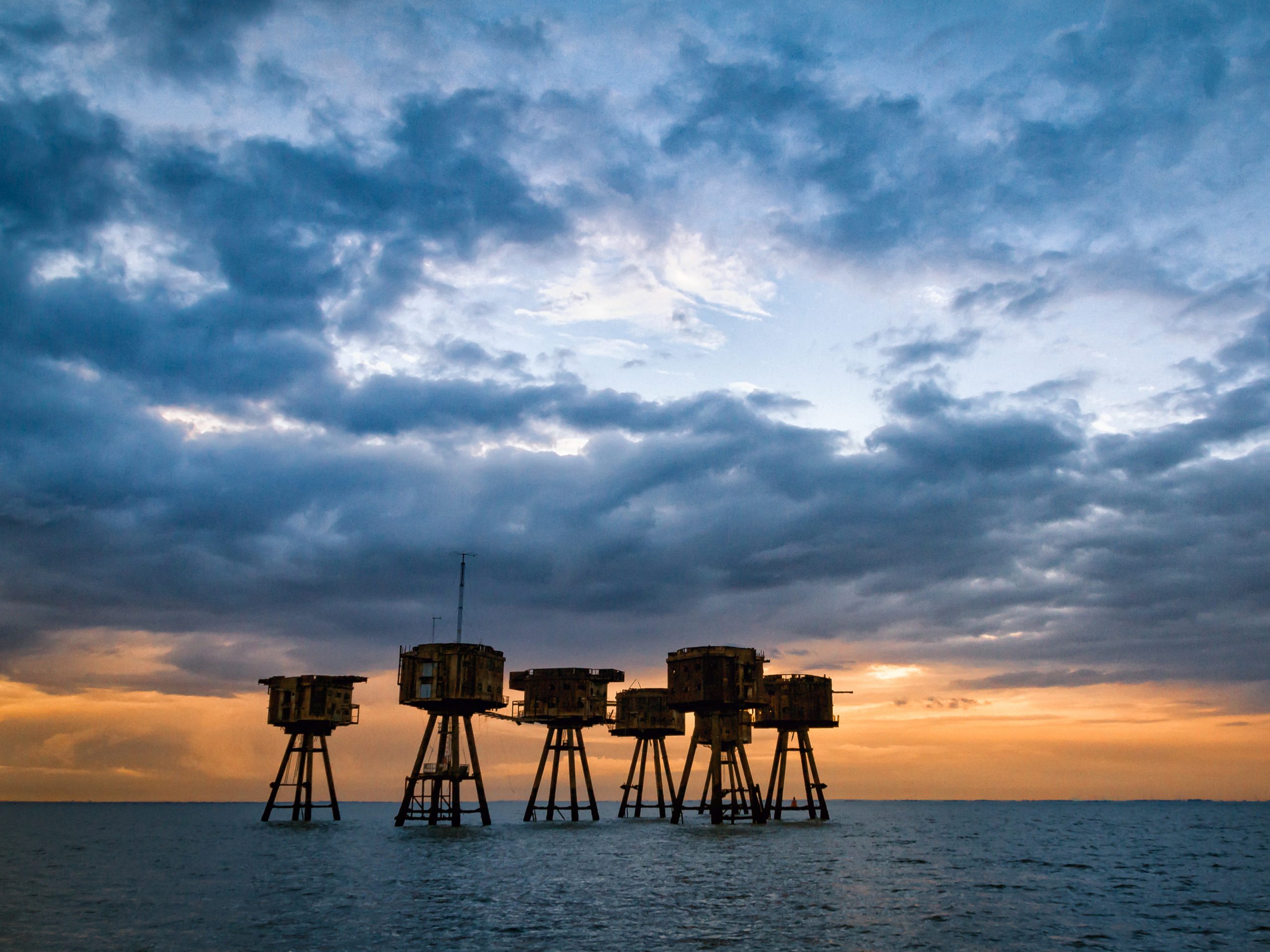- The Maunsell Army and Navy forts were built and placed in the Thames Estuary in 1942 to help protect London from airstrikes and sea raids during World War II.
- After the war, the forts became the headquarters for pirate radio stations.
- Today, the forts are abandoned and dilapidated, but you can visit them by boat.
- Visit Insider’s homepage for more stories.
All over Europe, there are monuments to remember World War II, and miles off the coast of the England, there’s one that not many know about.
The Maunsell Army and Navy forts in the Thames Estuary once guarded the UK against bombs, but today, they are dilapidated, abandoned structures that you can only reach by boat.
Keep scrolling to learn more about these forts and what they look like today.
During World War II, London’s ports were vulnerable to German bombings by air and by sea.

The country needed to develop a plan to protect themselves from the Germans on the coast.
The answer was to build forts out at sea so that foreign planes and boats could be destroyed before reaching the coastline.

Guy Maunsell, a civil engineer in England, designed forts that could be built on land and then installed out at sea in 1942.
They were located eight miles off the coast and acted as guards.

In all, there were four Navy forts and three Army forts placed in the Thames Estuary. The three Army forts were called Nore, Red Sands, and Shivering Sands. Only two still stand today.
The Army forts consisted of seven towers connected by steel walkways.

Each of the towers stood on four concrete legs. The buildings on top of these legs were made of steel, had two floors, and measured 36 feet by 36 feet.
Each of these forts housed weaponry and sleeping accommodations for the soldiers.

At any given time, there were 265 men living on each fort. For many, an assignment at the forts was cold, isolating, and long.
The forts turned out to be successful in protecting the country from threats.

While in operation, the forts shot down 22 planes and 30 bombs.
By the 1950s, the forts were abandoned, but they were given a second life in the '60s as radio headquarters.

They were pirate radio stations.
While some of the forts were destroyed by storms, others still stand in ruin today.

Although the buildings are still standing, they have remained unoccupied for decades.
If you take an hour boat ride off the coast of the UK, you can visit the waters surrounding the forts.

Photographer Scott Amling took a boat out to the forts in 2018 and experienced the decaying buildings for himself.
Although you can't go onto the forts anymore, it's clear these buildings are in varying states of decay.

"The forts had this rust and patina on the surface of the metal sides and you could see how they were constructed in plates riveted together," Amling told Insider. "The winter fog and lack of visibility added to the mystery of the forts."
The walkways that once connected the towers are now dilapidated.

The catwalks are no longer safe.
Some parts of the steel forts are completely overrun with rust.

"[It's] hard to imagine that men were stationed out there in these iron cans above the water firing anti-plane guns at the German bombers and mostly at night," Amling said.
Although the buildings are in ruins, they still stand as a memorial to World War II — and the brave soldiers who served their country.

Even though they don't look like much these days, the Maunsell forts once helped keep the UK safe.
- Read more:
- The abandoned Gwrych Castle in North Wales is 200 years old and said to be haunted. Take a look inside.
- Take a look inside the famously creepy Winchester House, which has 160 rooms, staircases that lead to nowhere, and doors that open into walls
- I toured two Ellis Island hospitals that have been abandoned for almost 65 years. Here's what they're like inside.
- Built in 1829 and abandoned since the '70s, Philadelphia's Eastern State Penitentiary is one of the creepiest places in America. Here's what it's like inside.
